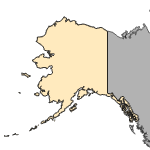Elimia virginica
(Piedmont elimia)
Mollusks-Gastropods
Native Transplant |
|
Common name: Piedmont elimia
Synonyms and Other Names: piedmont elimia, Virginia river snail, Goniobasis virginica, and Oxytrema virginica
Taxonomy: available through
www.itis.gov
Identification: Elimia virginica belongs to the family Pleuroceridae, a group of snails with thick, elongated shells. The opercula are withdrawn, proteinaceous, corneous, and paucispiral. The shells are dextral and have a very high and narrow spire, with little space in the incisions between the whorls. This species has two distinct shell morphologies, one smooth and one lirate (i.e. finely lined or grooved) (Smith 1980). Specimens of this species often vary in coloration; in general, E. virginica is yellow to chestnut in hue, but it may or may not exhibit 2 darker brown spiral bands (Peckarsky et al. 1993). Juveniles (snails with an aperture height of no more than 7 mm) display the banding more frequently than adults (Smith 1980). It is straightforward to distinguish the female of this species by way of the external genital sinus (Jones and Branley 1964).
Size: Elimia virginica from New York State and the Connecticut River range from 27–33 mm high, with an aperture height of 9–12 mm (Smith 1980).
Native Range: Elimia virginica is native to large Atlantic coast rivers in eastern North America from Massachusetts to Virginia, found east of the continental divide (Pennak 1989, Smith 1980). The northeastern limit of the native range of the species is the lower Connecticut River (Smith 1980).



|

Alaska |

Hawaii |

Puerto Rico &
Virgin Islands |

Guam Saipan |
Hydrologic Unit Codes (HUCs) Explained
Interactive maps: Point Distribution Maps
Nonindigenous Occurrences:
Table 1. States with nonindigenous occurrences, the earliest and latest observations in each state, and the tally and names of HUCs with observations†. Names and dates are hyperlinked to their relevant specimen records. The list of references for all nonindigenous occurrences of Elimia virginica are found here.
Table last updated 5/4/2024
† Populations may not be currently present.
Ecology: Found in freshwater rivers and streams with cobble bottoms and boulders. Pleurocerids are usually found in lotic erosional environments, in riffles or shoals with rock or sand substrate, and especially frequently on rocks in slower areas of medium size reaches. Elimia virginica usually inhabits slow to medium velocity rivers and streams with firm and clean gravel, cobble and rock substrate (Smith 1980). Pleurocerids in general are sensitive to abiotic stresses, and the E. virginica is not tolerant to siltation (Smith 1980). In Connecticut, the E. virginica is at the edge of its range and is most likely limited to hard water habitats only (Jokinen and Pondick 1981). During collections made in the Connecticut River, the snail was found to inhabit regions with water temperatures up to 27.5 degrees C, dissolved oxygen between 7 and 14 ppm, CaCO3 concentration from 42–160 ppm, pH from 7.6–9.0 and CO2 concentration from 0–10 ppm (Smith 1980). However, it should be noted that at some of these sites, population abundance was very low and/or decreasing, especially in conditions of high water temperature and alkilinity (Smith 1980). A short study in the Potomac River, Virginia, found that the snail has a very strong shell that is adapted to withstand predation by such predators as crayfish and ducks. However, there is an evolutionary trade-off between predator defense and rapid growth and reproduction amongst snail populations found in this river.
Elimia virginica, unlike softer shelled physid snails, grows very slowly and has the lowest intrinsic rate of increase, along with Mudalia carinata, in this environment (Hamilton 1980). Elimia virginica is dioecious (Jones and Barclay 1964) and lays its eggs from spring to summer, in particular in June and July (Smith 1980). It is often sexually mature in a year; can live 5 years.
In the Connecticut River, shells of E. virginica is often used as substrate by epizootic algae and the Entoproct Urnatella gracilis (Smith 1980). Trematodes are often parasitic in reproductive organs of this species (Smith 1980).
Means of Introduction: Migrated from the Atlantic drainage through the Erie Canal to the Lake Ontario drainage.
Status: Range is shrinking in the native Connecticut River range. The species is considered established in the Lake Ontario drainage.
Impact of Introduction:
A) Realized: There is recent evidence for hybridization and introgression between E. virginica and E. livescens amongst populations brought into contact due to the opening of the Erie Canal (Bianchi et al. 1994). These two species were formerly completely geographically isolated during glaciation by the Alleghenian Divide, and the former was only found in Atlantic Slope drainages, while the latter was only found in Interior Basin drainages (Bianchi et al. 1994). Hybridization and introgression have the potential to jeopardize the genetic integrity of a species, especially when the population is already small.
There are currently no known impacts caused by introduction of this species to other water bodies.
B) Potential: Unknown
References: (click for full references)
Bianchi, T.S., G.M. Davis, and D. Strayer. 1994. An apparent hybrid zone between freshwater gastropod species
Elimia livescens and
E. virginica (Gastropoda: Pleuroceridae). American Malacological Bulletin 11(1):73-78.
Hamilton, S. 1980. Reproduction or shell armor – a trade off in freshwater gastropods. The Bulletin of the American Malacological Union, Inc. 46:71.
Huffman, J.E., and B. Fried. 1983. Trematodes for Goniobasis virgnica (Gastropoda: Pleuroceridae) in Lake Musconetcong, New Jersey. Journal of Parasitology 69(2):429.
Jokinen, E.H., and J. Pondick. 1981. Rare and endangered species: freshwater gastropods of southern New England. The Bulletin of the American Malacological Union, Inc. 50:52-53.
Jones, W.C. Jr.. and A.B. Branley. 1964. The radula, genital system, and external morphology in Mudalia potosiensis (Lea) 1841 (Gastropoda: Prosobranchiata: Pleuroceridae) with life history notes. Transactions of the American Microscopical Society 83(1):41-62.
Mills, E.L., J.H. Leach, J.T. Carlton, and C.L. Secor. 1993. Exotic species in the Great Lakes: a history of biotic crises and anthropogenic introductions. Journal of Great Lakes Research 19(1):1-54.
Peckarsky, B.L., P.R. Fraissinet, M.A. Penton, and D.J. Conklin Jr. 1993. Freshwater Macroinvertebrates of Northeastern North America. Cornell University Press, Ithaca, New York. 442 pp.
Pennak, R. 1989. Fresh-water Invertebrates of the Unites States, 3rd ed. Protozoa to Mollusca. John Wiley & Sons, Inc., New York, New York. 628 pp.
Smith, D.G. 1980. Goniobasis virginica (Gastropoda: Pleuroceridae) in the Connecticut River. The Nautilus 94(2):50-54.
U.S. Environmental Protection Agency (USEPA). 2008. Predicting future introductions of nonindigenous species to the Great Lakes. National Center for Environmental Assessment, Washington, DC; EPA/600/R-08/066F. Available from the National Technical Information Service, Springfield, VA, and http://www.epa.gov/ncea.
Author:
Kipp, R.M., A.J. Benson, J. Larson, and A. Fusaro
Revision Date: 6/4/2019
Citation Information:
Kipp, R.M., A.J. Benson, J. Larson, and A. Fusaro, 2024, Elimia virginica: U.S. Geological Survey, Nonindigenous Aquatic Species Database, Gainesville, FL, https://nas.er.usgs.gov/queries/factsheet.aspx?SpeciesID=1032, Revision Date: 6/4/2019, Access Date: 5/4/2024
This information is preliminary or provisional and is subject to revision. It is being provided to meet the need for timely best science. The information has not received final approval by the U.S. Geological Survey (USGS) and is provided on the condition that neither the USGS nor the U.S. Government shall be held liable for any damages resulting from the authorized or unauthorized use of the information.